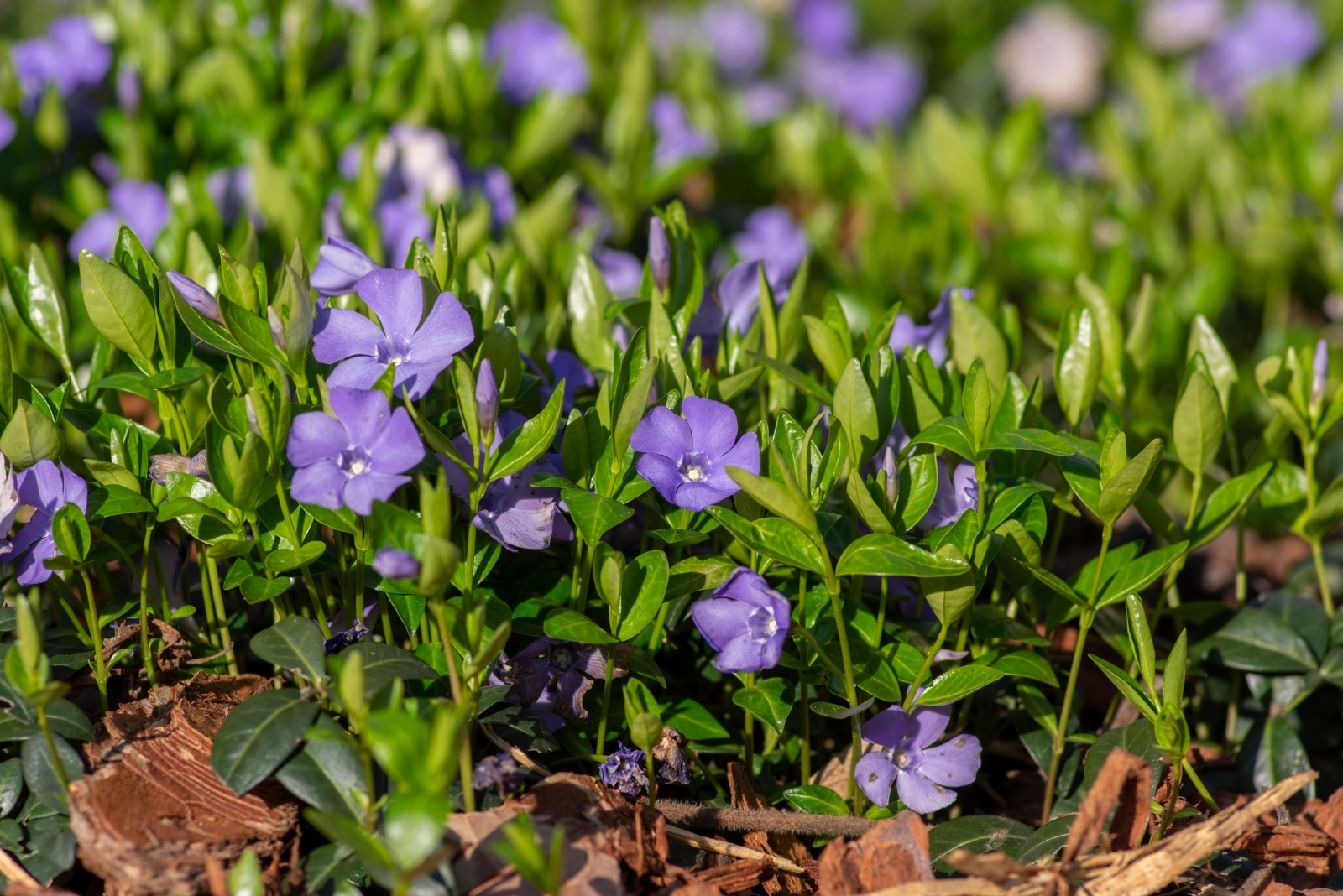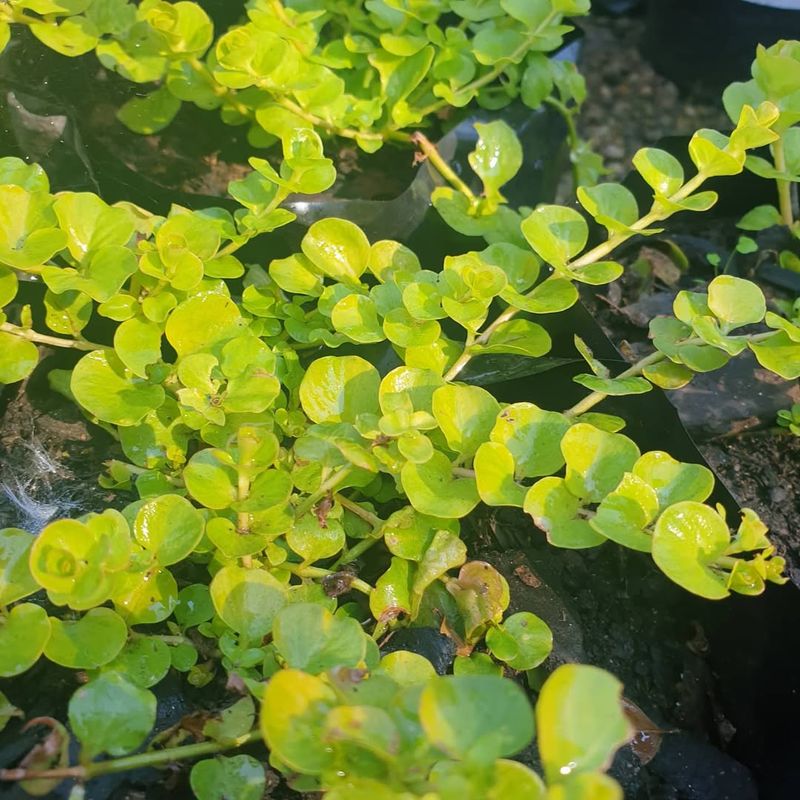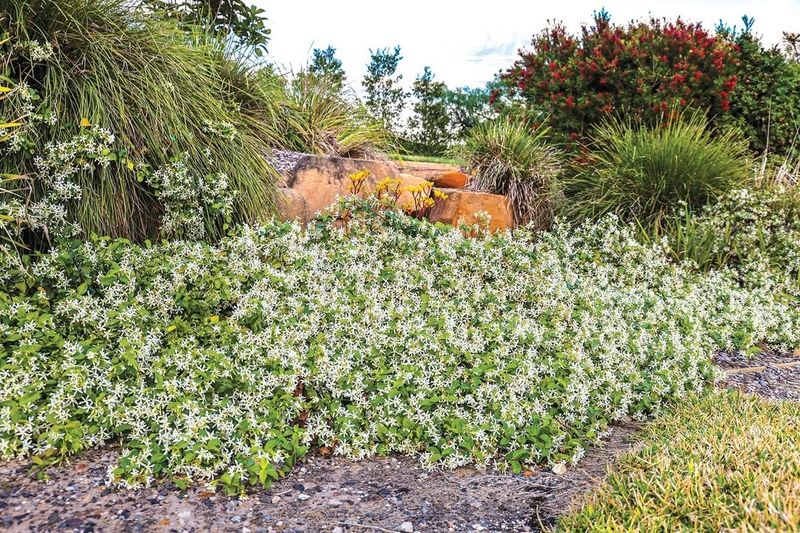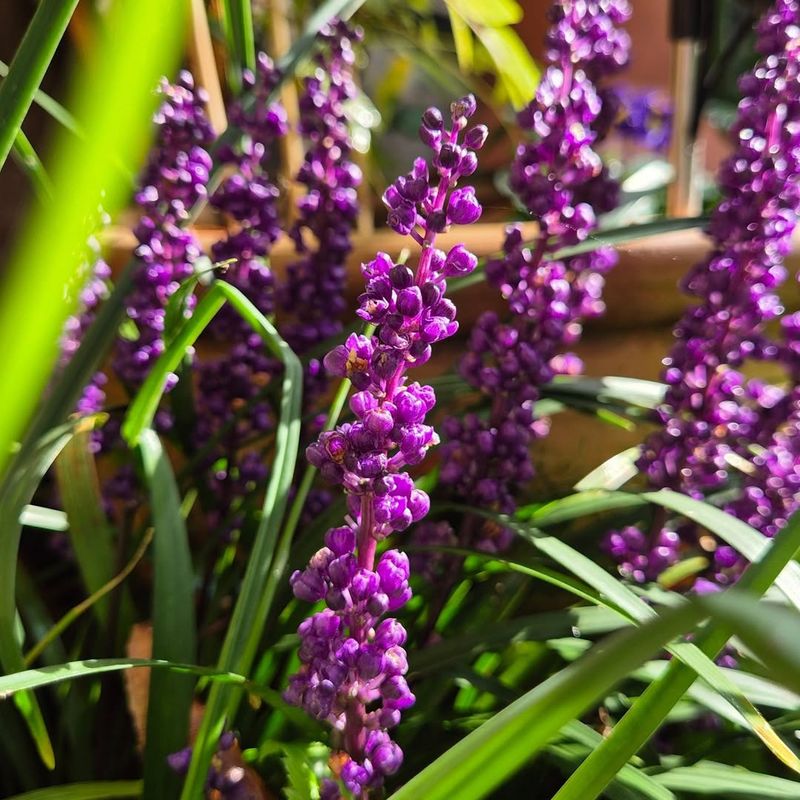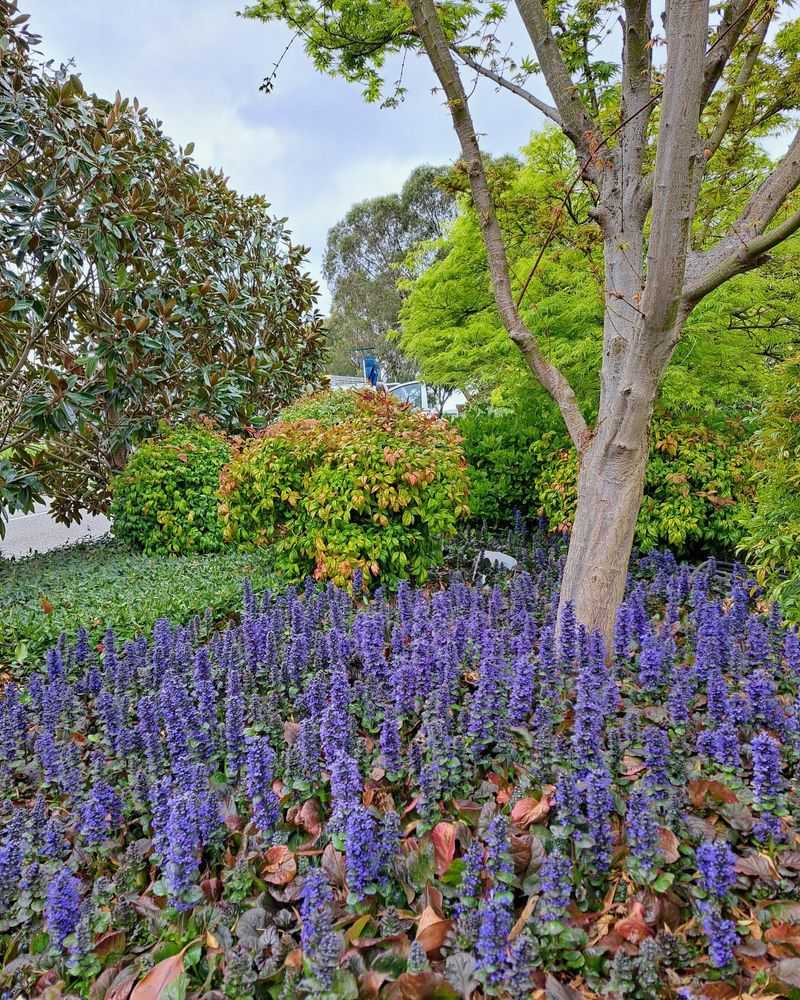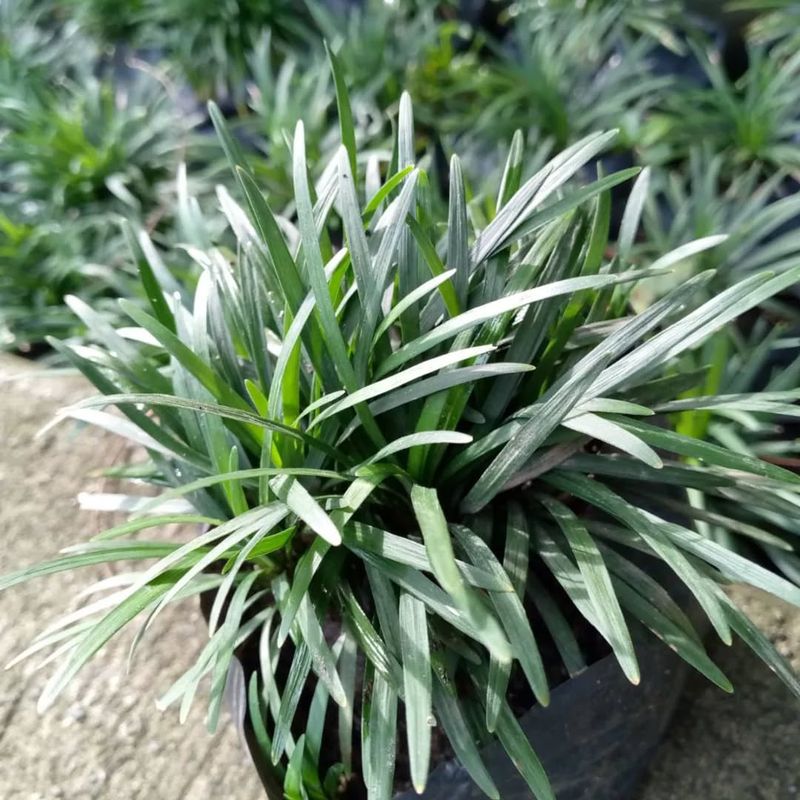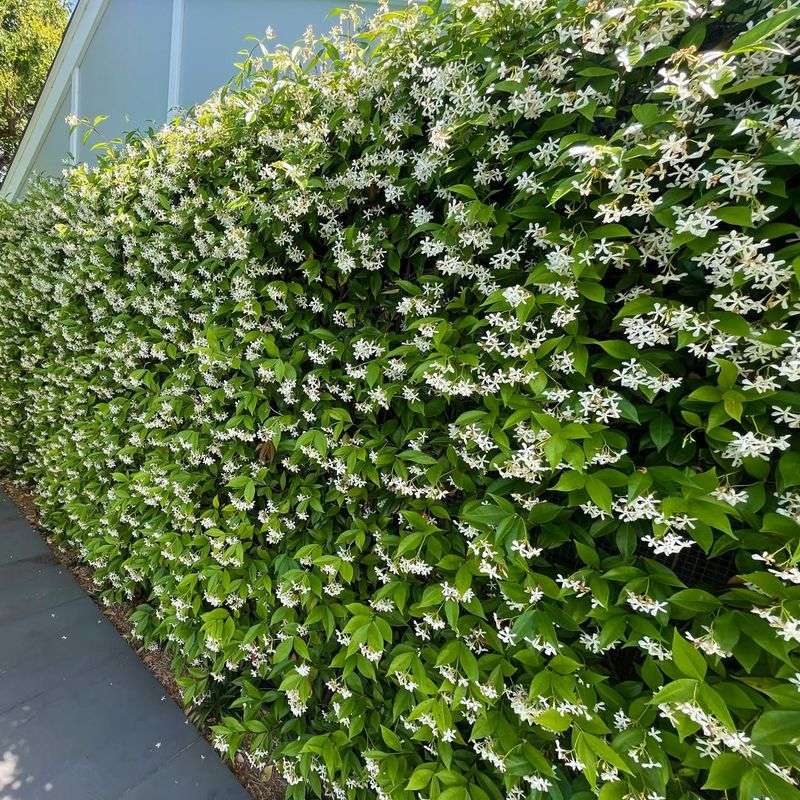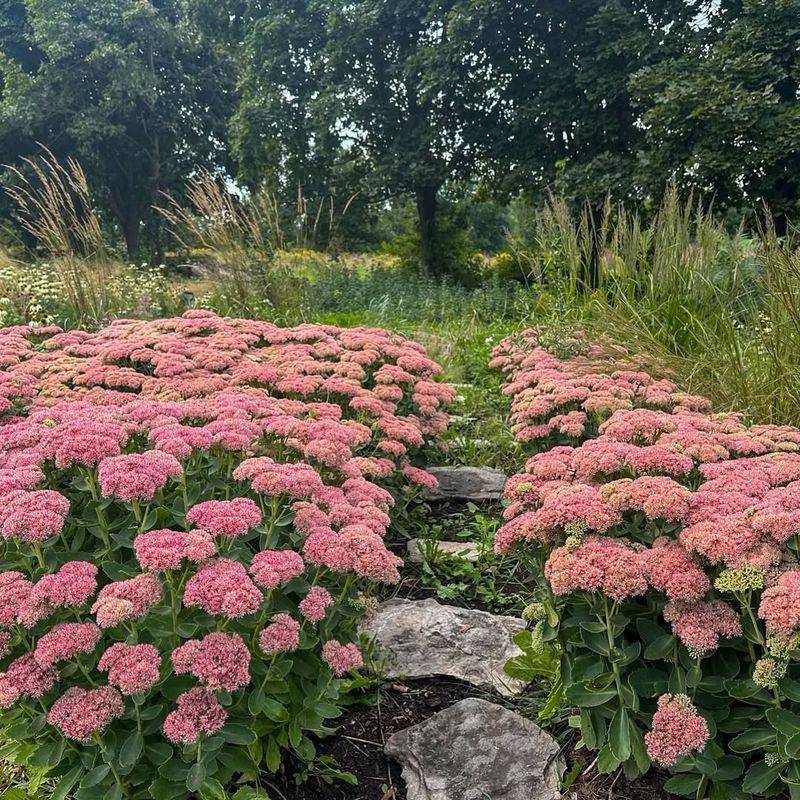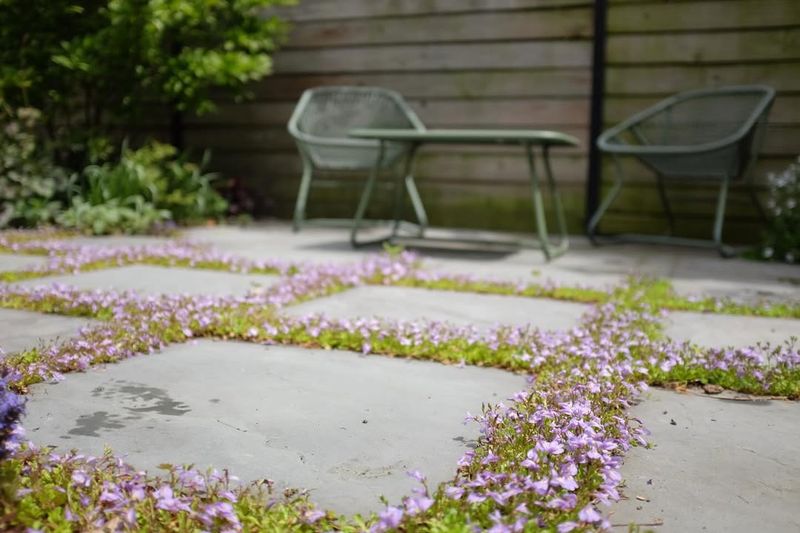Bare spots have a way of sticking out like a sore thumb in South Carolina gardens, but the right ground covers can turn those trouble spots around in no time.
Some plants are natural go-getters, racing across the soil and stitching together empty patches before weeds even think about moving in. With a few fast spreaders in the mix, those once barren areas can become lush, full, and picture perfect before you know it.
1. Creeping Jenny (Lysimachia nummularia)
Bright chartreuse leaves make this plant impossible to miss as it races across bare ground. Creeping Jenny thrives in South Carolina’s moisture and can handle both sun and shade, making it super versatile for different garden spots.
This low-growing wonder spreads by sending out runners that root wherever they touch soil. Yellow flowers pop up in summer, adding extra color to the already vibrant foliage.
Watch it near water features or moist areas where it really takes off and creates thick, weed-blocking mats within a single growing season.
2. Asiatic Jasmine (Trachelospermum asiaticum)
Dark, glossy leaves create an elegant carpet that stays green year-round in South Carolina gardens. Unlike its climbing cousin, this jasmine hugs the ground and spreads steadily without becoming a nuisance.
Heat and humidity don’t bother this tough plant one bit. It handles drought once established and works beautifully under trees where grass struggles to grow.
Small white flowers appear occasionally, though gardeners mainly love it for that rich, evergreen foliage that looks polished without any fuss or special care required.
3. Liriope (Liriope muscari)
Clumps of grass-like leaves expand outward each year, eventually merging into a continuous ground cover that deer won’t touch. Purple or white flower spikes shoot up in late summer, attracting butterflies and adding vertical interest.
Adaptable to almost any soil type, liriope handles South Carolina’s clay surprisingly well. It tolerates shade under trees but also grows happily in sunny spots.
Divide established clumps every few years to speed up coverage in new areas, or just let nature take its course as plants spread steadily on their own.
4. Ajuga (Ajuga reptans)
Bronze, purple, or variegated leaves form colorful rosettes that multiply quickly through underground runners. Spring brings stunning blue, purple, or white flower spikes that rise above the foliage like tiny towers.
Shade-loving ajuga solves the problem of what to plant under trees where sunlight barely reaches. South Carolina’s mild winters mean this semi-evergreen keeps its good looks most of the year.
One plant becomes dozens within months, creating a thick mat that chokes out weeds while adding serious visual appeal to boring garden corners.
5. Mondo Grass (Ophiopogon japonicus)
Fine, dark green blades create a neat, tidy appearance that resembles miniature grass but requires zero mowing. Mondo grass spreads through underground rhizomes, gradually filling spaces between plants until you have solid coverage.
Shade doesn’t slow this plant down at all, making it perfect for those tricky spots under porches or dense tree canopies. Small white or lavender flowers hide beneath the foliage, followed by blue berries.
Patient gardeners love how mondo grass eventually creates maintenance-free areas that stay attractive through South Carolina’s hottest summers and mildest winters alike.
6. Confederate Jasmine Ground Cover (Trachelospermum jasminoides)
Heavenly fragrance fills the air when white pinwheel flowers bloom in spring, making this ground cover a sensory delight. Train it to stay low, and it spreads across the ground instead of climbing upward.
Glossy evergreen leaves look healthy and vibrant even during South Carolina’s occasional cold snaps. Growth accelerates in warm weather, quickly covering bare spots with dense foliage.
Bees and butterflies flock to those sweetly scented blooms, turning problem areas into pollinator havens while the thick growth keeps weeds from gaining any foothold whatsoever.
7. Periwinkle (Vinca minor)
Glossy leaves and cheerful purple-blue flowers make periwinkle a classic choice for challenging garden areas. Trailing stems root at nodes, spreading outward in all directions to create thick coverage.
Dry shade under trees is no match for this determined plant that thrives where others give up. South Carolina gardeners appreciate how it stays evergreen, providing color even in winter months.
White or variegated varieties offer different looks, but all share that same vigorous spreading habit that transforms bare ground into blooming carpets within just one or two seasons.
8. Sedum (Sedum species)
Succulent leaves store water, allowing sedum to laugh at South Carolina’s occasional droughts and hot, sunny exposures. Mat-forming varieties spread quickly, creating colorful tapestries of green, gold, or reddish foliage.
Star-shaped flowers attract butterflies and beneficial insects throughout summer and fall. Different species offer various heights and colors, letting you customize the look you want.
Rocky slopes, sandy soil, or any well-drained spot becomes a showcase when sedum takes over, proving that tough conditions don’t mean you have to sacrifice beauty or coverage.
9. Green And Gold (Chrysogonum virginianum)
Native to the Southeast, this cheerful plant feels right at home in South Carolina gardens and spreads reliably without becoming aggressive. Bright yellow, star-shaped flowers bloom from spring through fall, providing months of color.
Low-growing foliage stays semi-evergreen in mild winters, keeping bare spots covered year-round. Butterflies visit the blooms regularly while the plant tolerates both sun and partial shade.
Supporting local wildlife comes naturally when you choose native plants like green and gold that evolved alongside South Carolina’s ecosystems and spread just fast enough to satisfy impatient gardeners.
10. Mazus (Mazus reptans)
Tiny purple-blue flowers cover this ground-hugging plant in spring, creating a carpet that looks almost magical between stepping stones. Mazus spreads by creeping stems that root quickly, filling gaps with bright green foliage.
Tolerant of light foot traffic, it works beautifully in pathways where you need something tougher than regular plants. South Carolina’s warmth and moisture help it spread faster than in cooler climates.
Bare spots disappear as mazus weaves itself through the area, creating a soft, living mulch that stays low and requires almost no maintenance once established in the garden.

